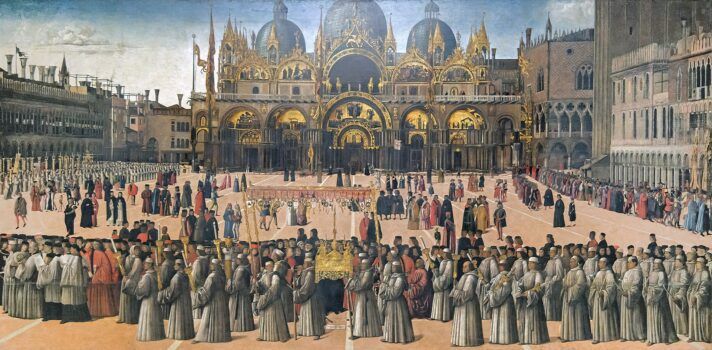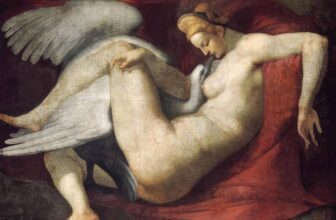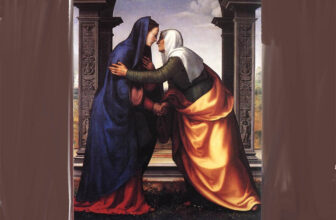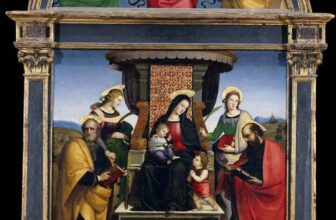The Story and Meaning of Procession in St. Mark’s Square
| Invest in Hidden Masterpiece: Rare Antique Oil Paintings For Sale. Limited Originals Available 💰😊 Are you looking for authentic hidden masterpiece? Explore old master antique oil paintings from the Renaissance and Baroque eras. From 16th-century portraits to 18th-century landscapes. Authenticity guaranteed, Old Master antique oil paintings for sale. Shop Now! 🎨 Renaissance And Baroque Art Landscape Antique Paintings Old Master Portrait Paintings |
Among the greatest triumphs of Venetian Renaissance art, Gentile Bellini’s Procession in St. Mark’s Square (1496) stands as a monumental celebration of faith, civic identity, and visual storytelling. More than just a religious painting, it is a window into the political and cultural life of Venice at the end of the fifteenth century. To look at this vast canvas is to step back in time to the bustling Piazza San Marco, where ritual, spectacle, and devotion merged seamlessly into the civic life of the Republic.
This essay will explore the story of the painting, who made it and why, what it represents, its symbolism and meaning, the events taking place within it, its artistic style, and finally its location and legacy today.
The Story of Procession in St. Mark’s Square
The painting depicts a real historical and devotional event: a solemn religious procession through the Piazza San Marco, the central square of Venice, during which the relic of the True Cross was carried. This relic, believed to be a fragment of the very cross on which Christ was crucified, was among the most sacred treasures of the Scuola Grande di San Giovanni Evangelista, a powerful Venetian confraternity (lay brotherhood).
The confraternity frequently staged elaborate processions through Venice to display the relic, not only as an act of piety but also as a public declaration of their wealth, prestige, and influence. Such ceremonies were deeply theatrical, involving processional routes, magnificent vestments, banners, choirs, clergy, and large crowds of spectators.
Gentile Bellini, the official painter of Venice and one of the most respected artists of his generation, was commissioned in 1496 to immortalize one of these processions. The occasion he depicted was not chosen at random but rather referred to a miraculous event said to have occurred during a procession in 1444. According to the legend, while the relic was being carried through the Piazza San Marco, a merchant named Jacopo de’ Salis prayed fervently for the healing of his gravely ill son. His prayers were answered, and the boy was cured.
Bellini’s painting freezes this moment of miraculous intervention within a breathtaking panorama of Venice’s civic and architectural heart.
Who Painted Procession in St. Mark’s Square and How
Gentile Bellini (c. 1429–1507) was the eldest son of Jacopo Bellini and brother to Giovanni Bellini, two other giants of Venetian Renaissance art. Unlike Giovanni, who specialized in religious altarpieces suffused with poetic light, Gentile excelled in large-scale narrative works and public commissions. His reputation was such that in 1479 he was sent by the Venetian Republic to Constantinople as cultural ambassador, where he painted the Ottoman Sultan Mehmed II’s portrait.
The Procession in St. Mark’s Square was created as part of a cycle of narrative paintings commissioned by the Scuola Grande di San Giovanni Evangelista to commemorate the miracles attributed to the relic of the True Cross. Other renowned painters, including Gentile’s brother-in-law Vittore Carpaccio, also contributed canvases to the cycle.
Bellini’s contribution was unique for its sheer scale and for the mastery with which he rendered Venice’s most iconic civic space. Measuring nearly four meters wide, the painting is an expansive, horizontal vista filled with hundreds of figures, the Basilica of San Marco, and the dynamic life of the Piazza.
Bellini worked with tempera and oil on canvas, carefully building up layers of paint to achieve both luminous color and meticulous architectural detail. His training in perspective drawing, inherited from his father Jacopo, enabled him to construct a convincing stage-like setting in which the procession unfolds. The technical brilliance of the work lies not only in its accuracy but also in its ability to capture the simultaneity of different actions and reactions within the crowd.
What the Painting Is All About
Procession in St. Mark’s Square is about three interwoven themes: faith, civic identity, and spectacle.
Faith: The central subject is the relic of the True Cross, carried in a gilded reliquary beneath a canopy. This sacred object symbolizes the Venetian Republic’s deep connection to Christian devotion and its claim to divine protection. The miracle associated with Jacopo de’ Salis and his son reinforces the notion that Venice was a city under God’s special favor.
Civic Identity: Unlike many Renaissance religious paintings, Bellini’s canvas is not confined to an otherworldly or biblical setting. Instead, it places sacred ritual squarely within the recognizable, civic space of Venice. The Piazza San Marco is not merely a backdrop but the protagonist in its own right, symbolizing the unity of religion and state in the Venetian Republic.
Spectacle: The painting captures the performative nature of Venetian processions, which were as much about display as devotion. The confraternity members, richly dressed in white robes, march in solemn order. Crowds of citizens, merchants, foreigners, and dignitaries throng the square. Musicians, banners, and ceremonial costumes turn the religious event into a grand public festival.
Thus, Bellini’s painting is not just about a miracle, it is about Venice itself, dramatizing the city’s piety, wealth, and magnificence.
Procession in St. Mark’s Square Symbolism and Meaning
The painting is filled with symbolic layers that reveal deeper meanings beyond the literal scene.
The Relic of the True Cross: At the very center of the composition, carried beneath a canopy, the relic embodies Venice’s role as custodian of sacred treasures. Just as St. Mark’s Basilica housed the relics of the Evangelist, the Scuola’s relic linked the city to Christ himself.
St. Mark’s Basilica: The shimmering Byzantine façade of the basilica symbolizes Venice’s unique identity as a crossroads between East and West. Its mosaics and domes evoke continuity with both Christian Rome and Constantinople, reinforcing Venice’s image as the “New Jerusalem.”
The Miracle of Healing: While the overall procession dominates the scene, careful attention reveals Jacopo de’ Salis kneeling in prayer at the lower right corner, with his son nearby. This detail personalizes the miracle, reminding viewers that divine intervention could occur even amid grand public ritual.
The Piazza San Marco: The very choice to depict the square reflects the symbolic centrality of this space in Venetian life. It was the heart of politics, religion, and commerce, a living theater where the republic performed its identity.
Crowds and Diversity: Bellini populates the painting with Venetians of different classes and even foreigners, emphasizing the cosmopolitan nature of the city. The diversity of faces also symbolizes the universality of Christian faith.
Processional Order: The ordered line of confraternity members represents not only devotion but also discipline, hierarchy, and unity, the very virtues Venice prided itself on as a stable republic in contrast to the monarchies of Europe.
What Is Happening in the Procession in St. Mark’s Square Painting
To walk the viewer’s eye across the painting is to follow the flow of a living procession.
At the center, under a richly decorated canopy, the relic of the True Cross is carried by confraternity members dressed in white robes. Around them, clergy, musicians, and officials take part in the solemn march.
In the lower right corner, the kneeling figure of Jacopo de’ Salis prays fervently, surrounded by others witnessing the miracle. Above him, bystanders lean from balconies, gaze from windows, and crowd the square to watch the sacred drama unfold.
The Basilica of San Marco looms magnificently in the background, its mosaics gleaming, while the long expanse of the square stretches across the width of the painting. The architecture is rendered in such detail that it serves as both a literal depiction of the city and a symbolic framework for the sacred event.
What strikes the viewer is not a single dramatic action but the totality of Venetian life, the merging of the miraculous with the everyday, the sacred with the civic, the eternal with the temporal.
Procession in St. Mark’s Square Type of Art
Procession in St. Mark’s Square belongs to the category of Venetian Renaissance narrative painting. More specifically, it is a large-scale confraternity commission, a type of art that combined religious devotion with civic pride.
Stylistically, the painting reflects several hallmarks of Venetian art:
Rich color and luminosity, achieved through oil paint.
Attention to architectural detail and spatial perspective.
A focus on pageantry, ritual, and the collective life of the city.
Integration of sacred subject matter into the real, lived environment of Venice.
Unlike altarpieces or portraits, this is a public, communal artwork, intended to inspire both devotion and civic unity.
Procession in St. Mark’s Square Location Today
Procession in St. Mark’s Square is housed in the Gallerie dell’Accademia in Venice, where it remains one of the collection’s masterpieces. Alongside other works from the Scuola di San Giovanni Evangelista’s cycle, it allows modern viewers to grasp the grandeur of Venetian Renaissance culture.
Though the Piazza San Marco has changed somewhat over the centuries, the painting still resonates with visitors who can stand in the real square and imagine the spectacle Bellini so vividly preserved.
Procession in St. Mark’s Square Legacy and Importance
Bellini’s Procession in St. Mark’s Square is more than just a document of a fifteenth-century procession. It is a profound statement about Venice itself, its piety, its wealth, its political order, and its vision of itself as a chosen city.
The work foreshadows later Venetian traditions of spectacle, from grand festivals to operatic performances, in which public ritual became inseparable from civic identity. It also influenced subsequent generations of artists, from Carpaccio to Canaletto, who likewise sought to capture the magic of Venetian spaces.
Above all, the painting stands as a reminder of how art can both record history and shape collective memory. For Venetians of Bellini’s time, it confirmed their belief in divine favor; for viewers today, it offers an unparalleled glimpse into the splendor of Renaissance Venice.
Gentile Bellini’s Procession in St. Mark’s Square is a masterwork of Renaissance narrative painting that combines faith, miracle, and civic pride in a single monumental canvas. Commissioned by the Scuola Grande di San Giovanni Evangelista, it immortalizes not just a miraculous healing but the very essence of Venice as a city of spectacle, devotion, and power.
Through its intricate detail, rich symbolism, and sweeping panorama, the painting transports viewers into the heart of fifteenth-century Venetian life. Today, preserved in the Gallerie dell’Accademia, it continues to speak across centuries, inviting us to reflect on the interplay of sacred ritual and civic identity in one of history’s most extraordinary republics.





